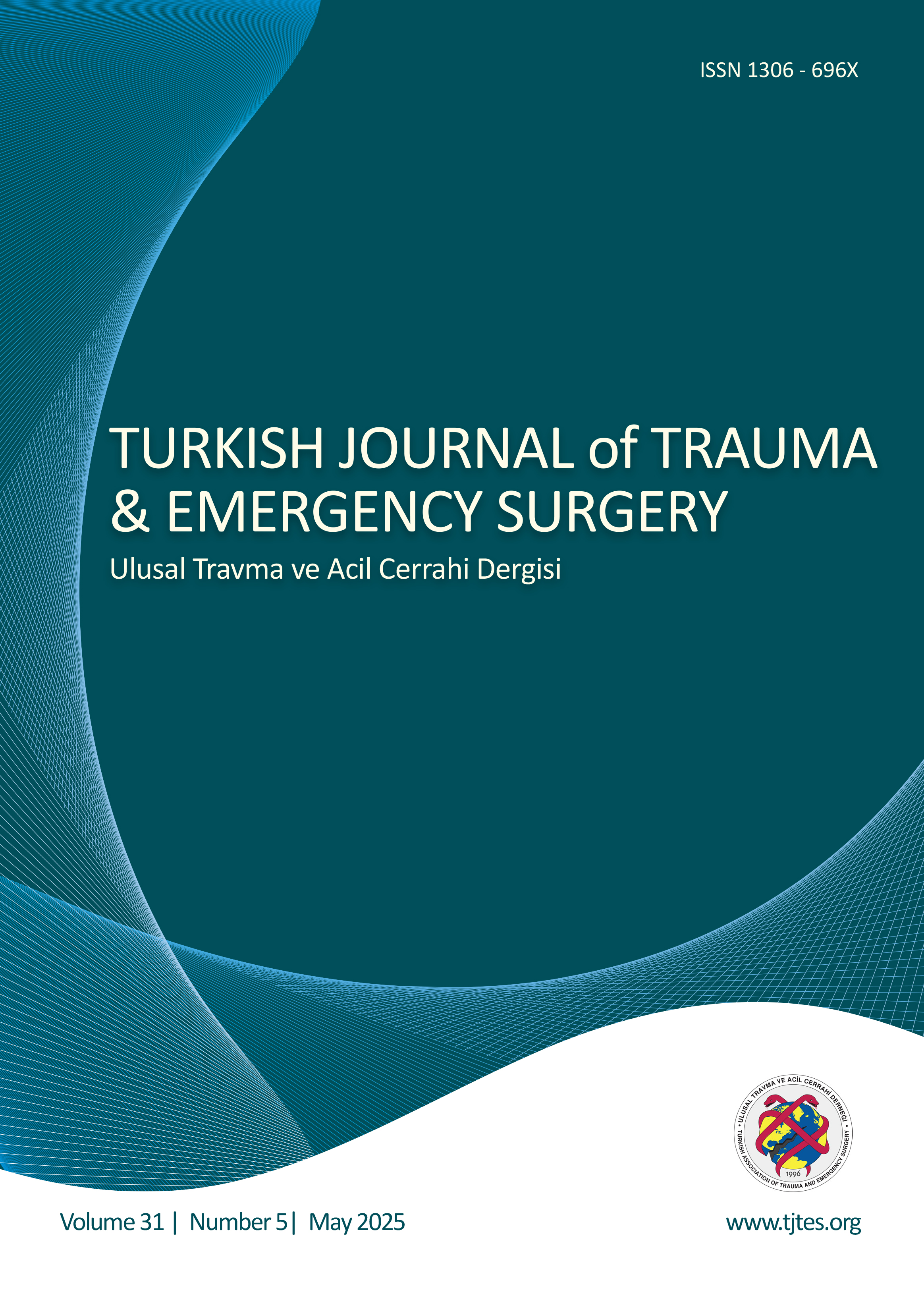Hızlı Arama
Elli yaş üstü hastalarda akut apandisit: Klinik değişkenlerin ameliyat ve ameliyat sonrası sonuçlara etkisinin değerlendirilmesi
Oğuz Hançerlioğulları, Mehmet Zeki Buldanlı, Burak Uçaner, Mehmet Sabri Çiftçi, Sacit Altuğ KesikliSağlık Bilimleri Üniversitesi Gülhane Eğitim ve Araştırma Hastanesi, Genel Cerrahi Kliniği, AnkaraAMAÇ: Elli yaş üzerindeki akut apandisit hastalarında yapılan çalışmalarda daha yüksek mortalite, daha yüksek perforasyon oranları, semptom başlangıcından hastaneye yatışa kadar daha fazla gecikme, daha yüksek komplikasyon oranları ve histopatolojik incelemelerde daha yüksek malignite sonuçları bildirilmiştir. Bu çalışmada, akut apandisit tanısı alan ve bu tanı nedeniyle ameliyat edilen 50 yaş ve üzeri bir hasta popülasyonunda ameliyat ve ameliyat sonrası bulguları etkileyebilecek klinik, laboratuvar ve görüntüleme bulgularının aydınlatılması amaçlandı.
GEREÇ VE YÖNTEM: Bu geriye dönük çalışmaya, Ocak 2017 ile Ocak 2020 arasında akut apandisit nedeniyle tek bir üçüncü basamak hastanede ameliyat edilen 50 yaş ve üzerindeki tüm hastalar alındı. Hastaların demografik verileri, komorbiditeleri, laboratuvar ve görüntüleme bulguları, ame-liyat ve ameliyat sonrası sonuçları, hastalarda gelişen cerrahi komplikasyonlar ve alınan örneklerin histopatolojik değerlendirmeleri detaylı olarak incelendi.
BULGULAR: Ortanca yaşı 59 olan, acil apendektomi yapılan 50 yaş ve üzerinde toplam 152 hasta çalışmaya alındı. Ameliyat öncesi iki ya da daha fazla konorbidite varlığının ve ameliyat sonrası yoğun bakım ünitesinde (YBÜ) yatış süresinin cerrahi komplikasyonların gelişimiyle anlamlı derecede ilişkili olduğu gösterildi (sırasıyla, p=0.002 ve p=0.006). Cerrahi komplikasyon gelişen hastalarda toplam yatış süresinin daha uzun (p<0.001), ameliyat öncesi albümin düzeylerinin daha düşük (p=0.017) ve takipte YBÜde yatış süresinin daha yüksek (p=0.006) olduğu görüldü. Açık apendektomi yapılan hastalarda ameliyat öncesi lökosit düzeylerinin daha yüksek olduğu görüldü (p=0.047). Ameliyat öncesi karın ağrısı süresinin hastanede yatış süresi ile güçlü bir şekilde ilişkili olduğu gözlendi (p<0.001). Ayrıca hastaların hastanede yatış süreleri ile ameliyat öncesi C-reaktif protein düzeyleri arasında güçlü bir korelasyon saptandı (p<0.001).
TARTIŞMA: Akut apandisitin geç erişkinlerde yönetiminin tanı ve ameliyat sonrası süreçler açısından zorlu olduğu öne sürülmüştür. Bu nedenle, bu hastalara ait ameliyat öncesi klinik, laboratuvar ve görüntüleme verileri dikkatli ve titizlikle değerlendirilmelidir.
Acute appendicitis over the age of 50: The evaluation of the impact of clinical variables on operative and post-operative outcomes
Oğuz Hançerlioğulları, Mehmet Zeki Buldanlı, Burak Uçaner, Mehmet Sabri Çiftçi, Sacit Altuğ KesikliDepartment of General Surgery, University of Health Sciences, Gülhane Training and Research Hospital, Ankara-TürkiyeBACKGROUND: Studies reported higher mortality and perforation rates, marked increase in delay from symptom onset to hospital admission, significant complication rates, as well as excessive malignancy outcomes on histopathological examinations in patients older than 50 years of age with acute appendicitis. Herein, it was aimed to reveal the clinical, laboratory, and imaging findings that might affect the operative and post-operative findings in a population of patients over the age of 50 who were diagnosed with and operated for acute appendicitis.
METHODS: Patients who were older than 50 years of age and operated for the diagnosis acute appendicitis between January 2017 and January 2020 in a single tertiary hospital were included in this retrospective study. Demographic data, comorbidities, laboratory and imaging findings, operative and post-operative results, surgical complications, as well as the histopathological evaluation of the excised materials of all patients were analyzed in detail.
RESULTS: A total of 152 patients who were older than 50 years of age and who underwent emergent appendectomy with a median age of 59 were included in the study. It was demonstrated that the development of surgical complications was significantly associated with post-operative hospitalization at the intensive care unit (ICU) and the presence of 2 or more comorbidities preoperatively (p=0.006 and p=0.002, respectively). It was observed that the duration of total hospitalization was longer (p<0.001), pre-operative al-bumin levels were lower (p=0.017), and the rate of hospitalization at ICU during the follow-up period was higher (p=0.006) in patients with surgical complications. Pre-operative white blood cell counts appeared to be significantly increases in patients who had open appendectomy (p=0.047). Moreover, both the duration of pre-operative abdominal pain and pre-operative C-reactive protein levels was found to significantly correlate with the duration of hospitalization (p<0.001 and p<0.001, respectively).
CONCLUSION: The management of acute appendicitis in late adulthood was suggested to be challenging both in terms of diagnosis and post-operative processes. Therefore, pre-operative clinical, laboratory, and imaging data obtained from these patients should be carefully and elaborately evaluated.
Makale Dili: İngilizce




